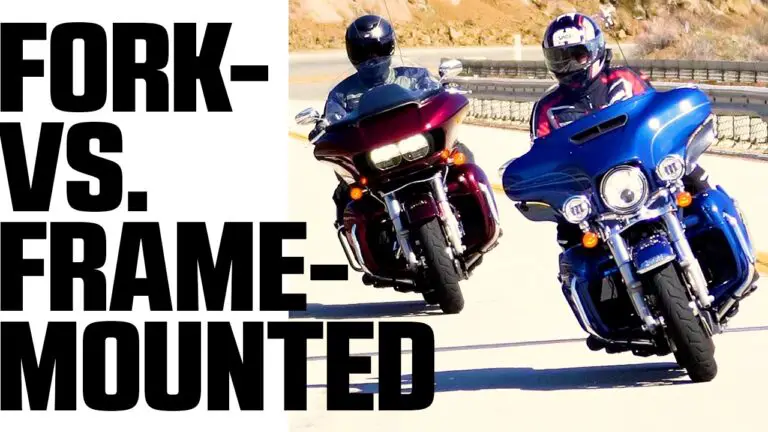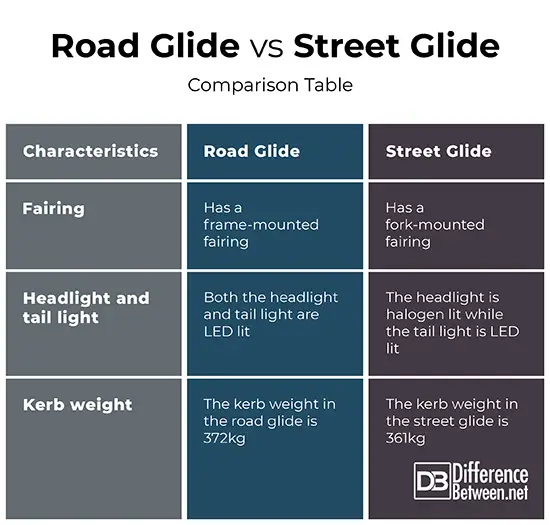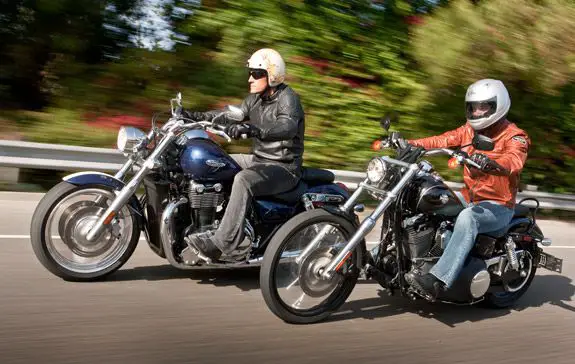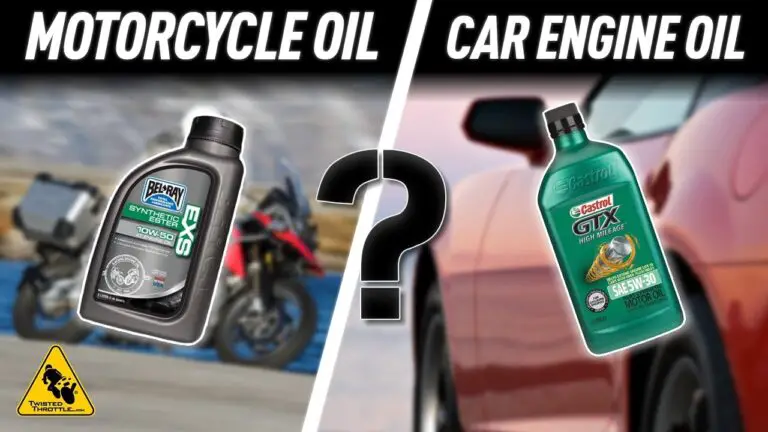The Harley 107, 114, and 117 engines denote the cubic inch displacement, indicating their power and performance differences. The 107 is the smallest, the 114 is more powerful, and the 117 is the largest and most potent of the engines.
Harley-Davidson’s lineup of engines is a showcase of the brand’s commitment to combining tradition with modern performance. Riders seeking a balance between torque, horsepower, and cubic inches can choose between the Milwaukee-Eight 107, 114, and 117 engines to power their ride.
Each engine brings its unique flavor to the road, suiting different rider needs. The 107 engine offers a satisfying blend of efficiency and power, making it an excellent choice for everyday riding. For those who crave more thrust, the 114 engine steps up the game, delivering greater acceleration and passing power. The 117 reigns supreme in Harley’s engine hierarchy, giving enthusiasts the ultimate performance experience with its top-of-the-line displacement and muscle. Harley aficionados understand that choosing among these engines is about finding the perfect harmony between the rumble, responsiveness, and the pure joy of the ride.
Introduction To Harley Davidson’s Engine Lineup
Harley-Davidson motorcycles echo with the sound of power, and at the heart of this rumble is their iconic engine lineup. Each engine offers riders a unique blend of performance, reliability, and that signature Harley growl. Among these titans of torque and horsepower lie the 107, 114, and 117 engines. These engines are not just numbers but represent a legacy of engineering prowess. Let’s ignite the ride into the world of these Harley engines.
Understanding The Importance Of Engine Displacement
Engine displacement refers to the total volume of air/fuel mixture an engine can draw in a single cycle. Larger displacement usually means a more powerful engine. The numbers 107, 114, and 117 represent the cubic inch displacement of each engine, translating to high performance on the road.
Historical Evolution Of Harley Engines
The legacy of Harley engines began over a century ago. Over the years, these engines have evolved drastically. Let’s explore the transformation from smaller, less powerful engines to larger, more advanced ones.
| Year | Engine | Displacement |
|---|---|---|
| 1909 | First V-Twin | 49.5 cubic inches |
| 1922 | JD Series | 74 cubic inches |
| 1999 | Twin Cam 88 | 88 cubic inches |
| 2017 | Milwaukee-Eight 107 | 107 cubic inches |
| Present | Milwaukee-Eight 114/117 | 114/117 cubic inches |
This table showcases the remarkable journey of Harley engines, culminating in the powerful 114 and 117 engines that boast immense power and unmatched riding experiences.

Credit: m.youtube.com
Breaking Down The Harley 107 Engine
Harley-Davidson motorcycles bring a reputation for power and performance. The engine is the heart of every Harley, and understanding the differences can enhance your ride. This post focuses on the smallest of the big three: the Harley 107 engine. Explore the engine that crafts the Harley experience on many popular models.
Technical Specifications Of The 107 Engine
The 107 bears the title “Milwaukee-Eight” due to its fresh V-Twin design. With a displacement of 107 cubic inches (1753 cc), it promises a blend of efficiency and speed. Boasting four valves per cylinder, this engine also aims at reduced noise and intake/exhaust flow improvement.
Fuel system: Electronic Sequential Port Fuel Injection (ESPFI)
Compression ratio: 10.0:1
Bore x Stroke: 3.937 in x 4.375 in
Typical Models Featuring The 107 Engine
- Street Glide
- Road King
- Electra Glide
- Softail Slim
- Heritage Classic
Performance And Torque Characteristics
Riders value the 107 engine for its punchy performance. It delivers power smoothly across the rev range. Torque peaks at about 111 ft-lb, ensuring solid acceleration and cruising capabilities.
| RPM | Torque |
|---|---|
| 3,250 | 111 ft-lb |
Owner Reviews And Common Modifications
The consensus among enthusiasts centers on the 107’s reliability and versatility. Owners appreciate its customization-friendly nature. Upgrades often include performance tuners, air intake systems, and exhaust modifications. These tweaks aim to further enhance power and sound, personalizing the Harley experience.
Analyzing The Harley 114 Engine
The Harley 114 engine is an emblem of raw power and refined engineering. When choosing a Harley-Davidson motorcycle, enthusiasts often debate between the 107, 114, and 117 engines. The 114 stands out with ample torque and an authoritative sound. Let’s delve into the muscle that powers the iron steeds bearing the Harley badge.
Technical Features That Distinguish The 114
- Displacement: 114 cubic inches (1868cc).
- Compression Ratio: Higher than 107, for added power.
- Fuel System: Electronic Sequential Port Fuel Injection (ESPFI).
- Exhaust: Dual, with crossover for enhanced performance.
Harley Models Powered By The 114 Engine
This beastly engine breathes life into several Harley-Davidson models:
- Fat Bob® 114
- Breakout® 114
- Fat Boy® 114
- Heritage Classic
- Street Glide® Special
- Road Glide® Special
Performance Enhancements Over The 107
The 114 engine boasts a noticeable performance upgrade over the 107:
- Increased Horsepower: Provides a quick throttle response.
- Greater Torque: Delivers a stronger push when accelerating.
- Better Cooling: Keeps the engine at optimal temperatures for performance.
Rider Experiences And Customization Options
Personalization is key to the Harley ownership experience:
- Vivid Colors: A wide range of color schemes to choose from.
- Performance Kits: Enhancements for even greater power output.
- Accessory Options: From wheels to handlebars, tailored to the rider.

Credit: www.hdforums.com
The Top-tier Harley 117 Engine Examined
Among the legendary lineup of Harley-Davidson engines, the 117 stands as the crown jewel. This powerhouse sets the benchmark not only in size but also in performance. Boasting the largest displacement offered by Harley, the 117 commands respect. Let’s rev up and examine what makes this engine roar louder and prouder than its siblings, the 107 and 114.
Exclusive Attributes Of The 117 Engine
- Largest displacement in standard H-D engine lineup
- High performance camshafts and air intake for enhanced airflow
- Increased torque and horsepower for exhilarating power
- Premium engine finishes for a distinctive look
Harley-davidson Models Equipped With The 117
The peak performer of its lineup, the 117 engine, is the heart of select Harley models. These models embody the spirit of power and luxury. Names such as the CVO Street Glide and CVO Limited shine in this exclusive club. Each 117-equipped model is a testament to Harley’s commitment to top-tier riding experiences.
Performance Metrics And Riding Impressions
Riders experience the thrill of the 117’s power with each twist of the throttle. A crucial measure, torque, peaks impressively, ensuring that acceleration feels both instant and forceful. On the open road, the 117 confirms its dominance through high-performance metrics and a rumble that turns heads.
Upgrade Path From 107 And 114 To 117
| Upgrade Feature | Benefit |
|---|---|
| Bolt-on kits | Easy transition to more power |
| Upgraded camshafts | Enhanced engine response |
| Bigger bore cylinders | Increased engine displacement |
| Performance tuning | Optimized engine performance |
For those wishing to climb the ladder of power, Harley-Davidson offers upgrade paths. The journey from a 107 or 114 to the mighty 117 is possible. Riders looking to boost their bike’s muscle can achieve their goal through the array of performance upgrades designed to bring engines to new heights of glory.
Comparative Analysis: 107 Vs 114 Vs 117
Harley-Davidson enthusiasts are always looking for the best engine experience. In this analysis, you’ll discover the differences between the 107, 114, and 117 engines. Each engine offers unique benefits. Your perfect match depends on your riding preferences and needs.
Direct Comparison Of Power And Torque
Power and torque are vital. These engines pack a serious punch. The 107 delivers a solid foundation of performance. The 114 steps it up, offering more power. The 117 tops the range, with the highest output in stock form. Let’s break it down:
- Harley 107: ~111ft-lb Torque
- Harley 114: ~118ft-lb Torque
- Harley 117: ~125ft-lb Torque
Reliability And Maintenance Considerations
Reliability matters. You want a bike that lasts. The 107 is known for its long-term endurance. The 114 builds on that reliability with improved components. The 117, while powerful, may require more care due to its performance edge. Maintenance needs can include:
- Regular oil changes
- Valve adjustments
- Scheduled service checks
Cost-benefit Analysis For Potential Owners
Cost is a key factor. The 107 typically offers a lower entry point. This makes it an attractive option for many. The 114 presents a moderate increase in price. This aligns with its power increase. The 117, being the premium option, commands the highest cost but also offers peak performance. Potential owners should weigh:
- Budget constraints
- Desired horsepower and torque
- Long-term value
Recommendations For Different Rider Profiles
What’s best for you? The 107 suits easy riders and cruisers. The 114 is for thrill-seekers who demand more. The 117 fits performance enthusiasts. Here’s a quick guide:
| Rider Profile | Engine Recommended |
|---|---|
| New Riders | Harley 107 |
| Regular Riders | Harley 114 |
| Power Riders | Harley 117 |
Conclusion: Choosing Your Ideal Harley Engine
Deciding on the perfect Harley engine is a crucial step for riders. This choice will shape your riding experience. We’ve explored the unique features of the Harley 107, 114, and 117 engines. Now, let’s wrap up our discussion to help you make an informed decision.
Summary Of Engine Capabilities
Each engine has its strengths.
- The Harley 107 offers solid performance with a balance of power and efficiency.
- Harley 114 steps up with more torque for a thrilling ride.
- For maximum power, the Harley 117 is the top performer.
| Engine | Horsepower | Torque |
|---|---|---|
| Harley 107 | 85 HP | 107 lb-ft |
| Harley 114 | 90 HP | 114 lb-ft |
| Harley 117 | 103 HP | 125 lb-ft |
Personal Riding Style And Engine Suitability
Your preferences matter. Choose the engine that suits your style.
- For relaxed cruising, the Harley 107 is a great match.
- Riders seeking more edge might prefer the Harley 114.
- The Harley 117 appeals to those who demand top power.
The Future Of Harley Engines
Harley-Davidson is always evolving. Anticipate advancements in engine technology. Keep an eye out for efficiency and performance upgrades. The brand will likely introduce new innovations that could influence your choice.
Remember to test ride different models. It’s the best way to feel the engines’ differences!
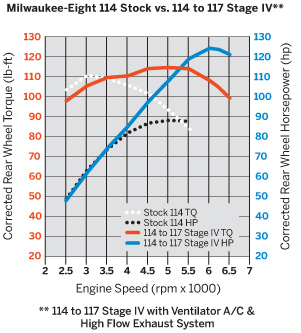
Credit: www.motorcyclistonline.com
Frequently Asked Questions Of Harley 107 Vs 114 Vs 117
Is There A Big Difference Between 107 And 114?
Yes, there is a notable difference between 107 and 114. They differ by 7 units, which can be significant depending on the context, such as measurements or numerical data.
What Is The Difference Between Harley 114 And 117?
The Harley 114 and 117 engines differ in displacement; the 114 has a 114 cubic inch (1,868 cc) capacity while the 117 engine offers 117 cubic inches (1,923 cc), resulting in greater power and torque for the 117.
How Much Hp Does A Harley 117 Have?
The Harley-Davidson 117 engine produces approximately 105 horsepower. This V-Twin powers select CVO and touring models, offering robust performance.
How Much Hp Does A Harley 107 Have?
A Harley-Davidson 107 engine typically produces around 92 horsepower.
Conclusion
Deciding between Harley’s 107, 114, and 117 engines is a big step for any rider. Each offers distinct power and performance to match your riding style. The 107 excels in efficiency, the 114 balances grunt and grace, while the 117 thrives on raw strength.
Choose wisely for an unmatched riding experience!

